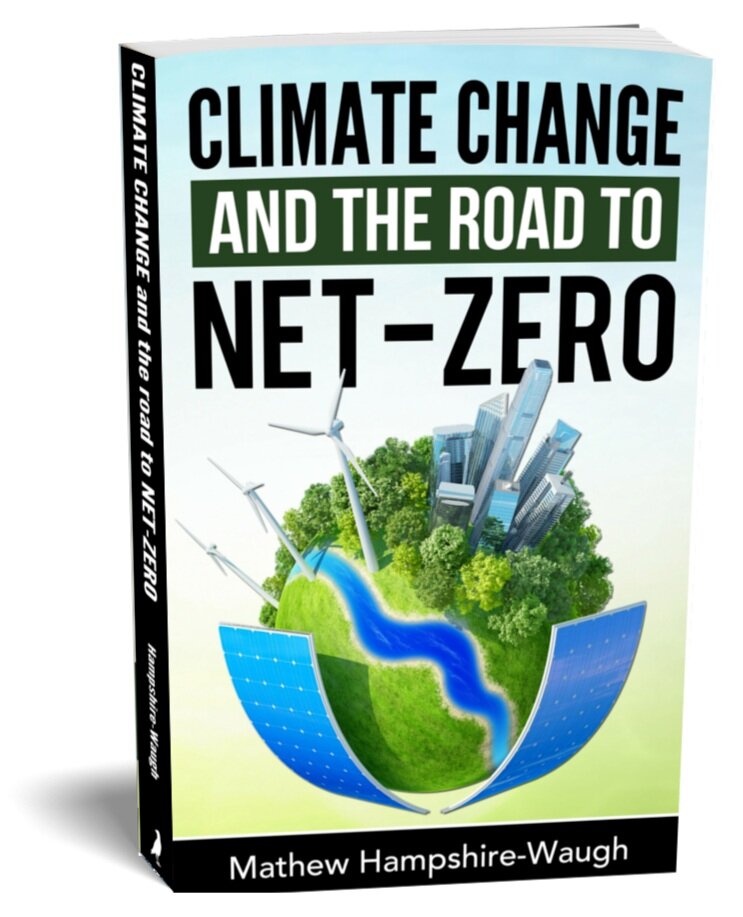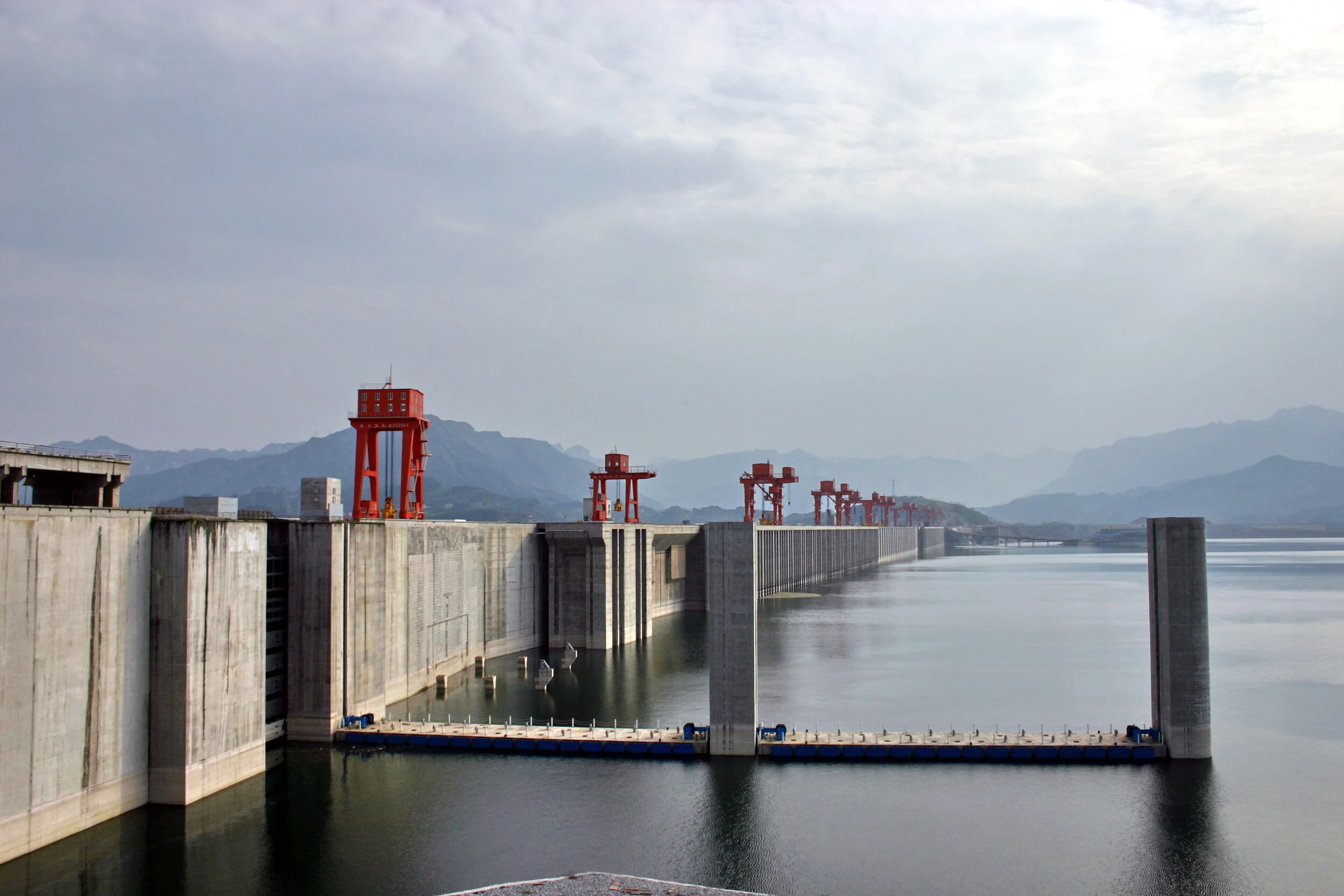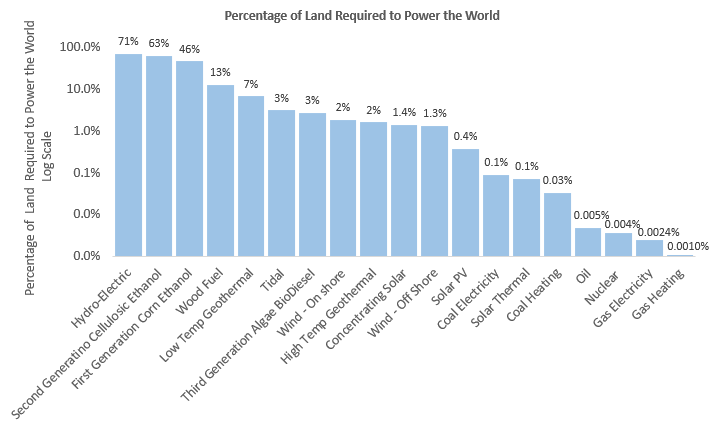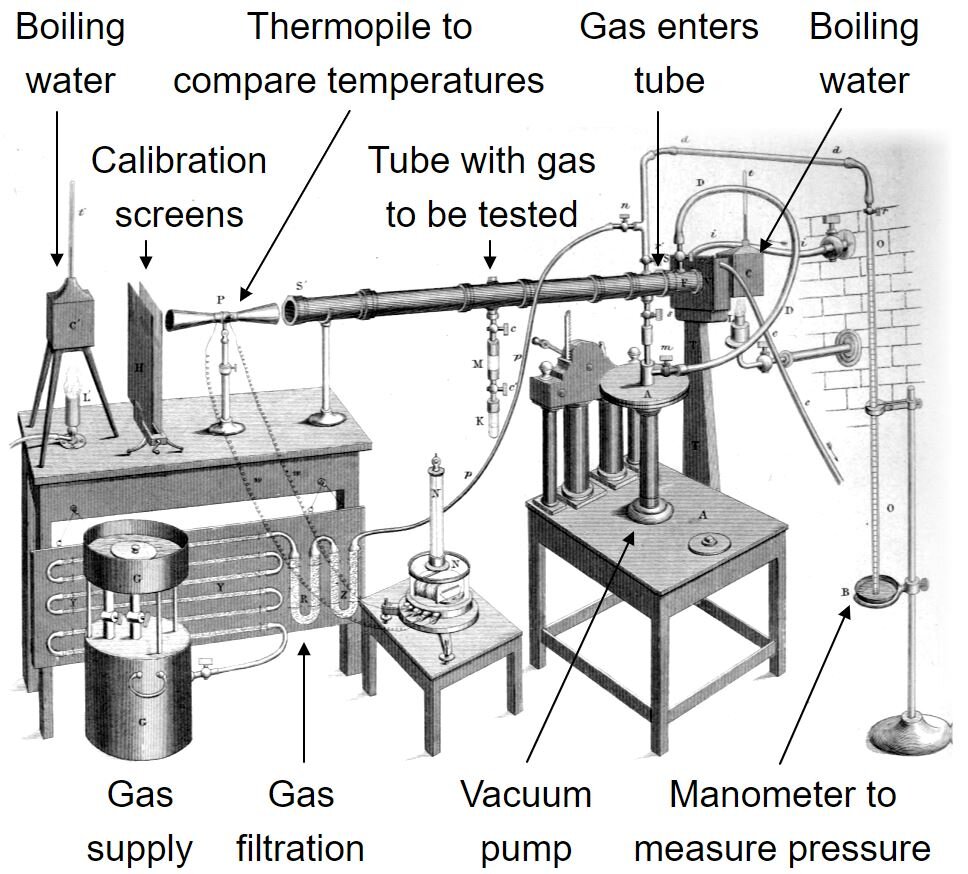Energy Supply, Power Density, and Land Use
In this post from the book NET-ZERO:
What is power density and why does it matter? Comparing the power output per unit area of land between fossil fuels, nuclear, and renewable energy generation.
Which energy supplies are limited by space on our planet? Meeting the world’s energy needs with bioethanol or hydro-electric requires over half of land on Earth.
How big an area is required to supply the world’s energy needs from renewables? Why just 1% of Earth’s dryland provides enough space for wind and solar to power the global economy.
Power density is a measure of the average power output per unit area used for generation. The world uses just over 100,000 billion kWh of final energy each year to run transport, industry, and convenience living. That includes the oil burnt in your car engine, the coal fed into manufacturing facilities, the natural gas heating your home, and the electricity used to power your appliances. Divide that total annual energy use over 365 days, and the 24 hours in each day, and this equates to an average of nearly 12 billion kW (12 TW) to power the planet at any given time.
Once we understand the power densities of different technologies and the power demands of the economy, we can explore which of our future net-zero technology options could help run the global system without creating undue pressure on the Earth’s finite land area.
Thermal Power Facilities
A typical centralised thermal power plant, which uses fuel to boil water and drive a generator, will occupy around 100,000 square metres of land with a power output of 500 MW. This gives centralised coal, gas, and nuclear energy supplies a power density of thousands of Watts per square metre.
To put 500MW into perspective think about a 1 kW kettle which can boil 1 litre of water in about 5 minutes. In comparison a 500 MW (500,000 kW) power plant could boil the 2.5 million litres of water in an Olympic sized swimming pool in 30 minutes.
If you go on to include the land area used to source the fuel and store the waste, this brings nuclear and gas power into the hundreds of watts per square metre. But coal operations can drop to below 100 watts per square metre if sourcing coal from open cast mines. Still, powering the planet using centralised thermal power plants requires less than 0.1% of land on Earth - which is why you rarely bump into a power station today.
Solar and Wind Power
Solar power density is a factor of one hundred times lower than thermal power.
Sunlight reaches the Earth’s surface with an average of 170 watts per square metre and solar PV panels can turn 18-20% of that energy into electricity (30 Watt per square metre). Once you include the required spacing between panels (to avoid shading) the power density is less than 20 watts per square metre. Solar has a significantly lower power density than centralised thermal power, yet solar as the sole source of power generation could power the world’s needs with less than 0.5% of land on Earth.
There is more than enough suitable space to power the planet on solar PV, and the land can still be used for fruit and vegetable growing, grazing, sustaining pollinators (bees), and biodiversity.
The power density of wind is a factor of ten times lower again.
The density of wind turbines is limited by the spacing between units. A gap of 5 times the rotor blade diameter is required to avoid destroying the wind flow. The Alta wind centre in California is one of the largest onshore wind farms in the world and has a power density of 4 W per square metre.
The Alta wind centre covers 80 million square metres, has peak capacity of 1,500 MW but runs, on average, at 23.5% of peak - a power density of 4 W per square metre.
Offshore fares a little better due to stronger winds at sea: Walney in the UK is one of the World’s largest such installations and has an average power density of 6 watts per square metre.
Walney covers 73 million square metres, with peak capacity of 1,000 MW, the facility averages 43% of peak and provides 6 watts per square metre final power density.
Wind turbines would require a few percent of land or coastal areas to provide enough energy for the global population.
There are more than enough wind resources to power the world, and the land or waters can still be used for farming and fishing.
Geothermal, Biofuels, and Hydro
High temperature geothermal provides a similar power density to wind and solar. However, the potential to scale up geothermal for electricity generation is limited by suitable locations which are situated near areas of volcanic activity. Iceland, West Coast US, West Coast Latin America, and East Coast Asia have good siting however the global technical potential is around 200 GW which is less than 2% of final power. Low temperature geothermal can be sourced anywhere by digging 6 metres underground but can only be used for low temperature heating and hot water.
Bioenergy has an even lower power density still, due to the low efficiency of sunlight conversion by plants.
Whilst a solar PV panel can convert 20% of the sun’s energy into electricity, vegetation typically converts less than 0.5% into biomass providing less than 0.8 watts per square metre. Convert the biomass into liquid fuels and you waste at least half again. So, switching the world’s energy supply to wood fuel would require 13% of land cover or about half of all the forests on Earth managed for fuel. Bioethanol would need half of all land on Earth for growing corn or switch grass.
Third generation algae oil offers some hope of improving bioenergy power density with strains being developed that capture up to 7% of the sun’s energy. If optimised, algae oil could provide the world’s energy needs with 3% of land.
Hydro comes bottom of the pile on power density.
The Three Gorges Hydro-electric Dam in China is the largest power plant in the world with 22,500 MW peak capacity – the equivalent of 50 coal facilities. The reservoir covers 1,000 km2 which is an area larger than the UK and it holds 40 billion tonnes of water hundreds of metres high. The Three Gorges Dam is so large it creates a bulge on the planet which slows the spin of Earth and extends our day by 6 hundredths of a second.
If you include the water catchment area, the whole network is nearly 1 million square km. Hydro yields a power density of less than 0.1 Watt per square metre. The low power density, and environmental damage caused by building dams will limit hydroelectric potential. Although many existing dams could be converted to produce low-carbon power.
When it comes to power density, centralised thermal power plants are unrivalled, yet the output efficiencies of today’s wind and solar technology are still good enough to power the planet using less than one percent of land on Earth.
If we are to move towards a low cost, rapidly deployable, low-carbon, safe, reliable, and sustainable energy future then wind and solar will undoubtedly play a leading role.
Click to find out more about The Role of Energy Storage with renewables & the Lifecycle Emissions of Different Energy Supply Options
Want to take action and help fight climate change - find more resources in Climate Action




































